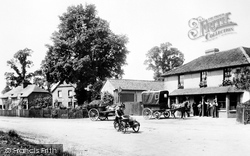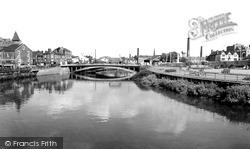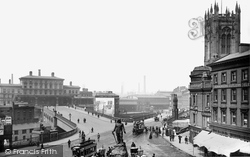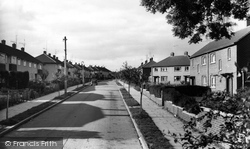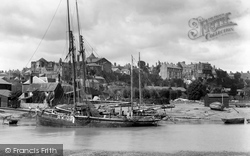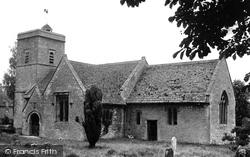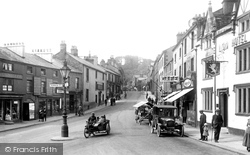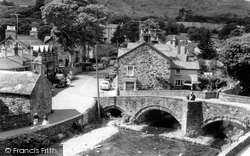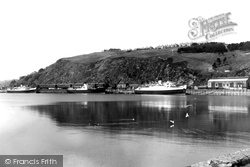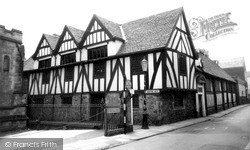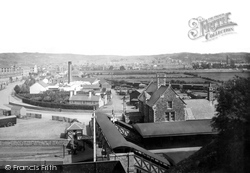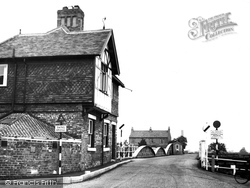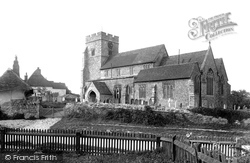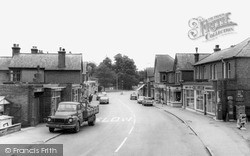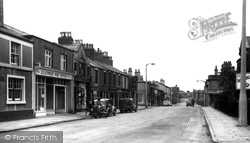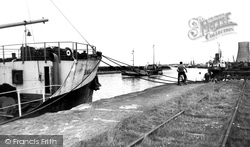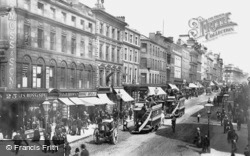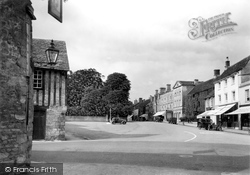Places
36 places found.
Those places high-lighted have photos. All locations may have maps, books and memories.
- Pentre-cwrt, Dyfed
- Pentre Halkyn, Clwyd
- Pentre, Mid Glamorgan
- Ton Pentre, Mid Glamorgan
- Pentre, Powys (near Llangynog)
- Pentre, Powys (near Guilsfield)
- Pentre, Powys (near Bishop's Castle)
- Pentre, Clwyd (near Mold)
- Pentre, Clwyd (near Ruabon)
- Pentre, Shropshire (near Chirk)
- Pentre, Clwyd (near Hawarden)
- Pentre, Dyfed (near Pontyates)
- Pentre, Powys (near Newtown)
- Pentre, Clwyd (near Chirk)
- Pentre, Clwyd (near Ruthin)
- Pentre, Clwyd (near Mold)
- Pentre, Shropshire (near Oswestry)
- Pentre, Powys (near Welshpool)
- Pentre, Clwyd (near Mold)
- Pentre, Shropshire (near Forton)
- Burntwood Pentre, Clwyd
- Pentre Berw, Gwynedd
- Pentre Hodre, Shropshire
- Pentre Llanrhaeadr, Clwyd
- Pentre-celyn, Clwyd
- Pentre Broughton, Clwyd
- Pentre Gwynfryn, Gwynedd
- Pentre Maelor, Clwyd
- Pentre-clawdd, Shropshire
- Pentre Galar, Dyfed
- Pentre Llifior, Powys
- Pentre-cefn, Shropshire
- Pentre-Gwenlais, Dyfed
- Pentre-Poeth, Dyfed
- Pentre Cilgwyn, Clwyd
- Pentre Morgan, Dyfed
Photos
98 photos found. Showing results 2,841 to 98.
Maps
316 maps found.
Books
2 books found. Showing results 3,409 to 2.
Memories
1,250 memories found. Showing results 1,250 to 1,250.
Captions
3,594 captions found. Showing results 3,409 to 3,432.
Fully upholstered comfort was provided for the passenger on this splendid early motorised tricycle in the centre of the picture, and it was probably needed on the un-metalled roads of the time.
There has been a bridge at Warrington since the 13th century, when the town centre began to develop in its present location away from the medieval village off Church Street.
At the centre bottom of our picture is Cromwell's statue, by Matthew Noble.
Having completed the tour of Daventry town centre, we now look at some of the 20th-century housing and industrial development.
Bodiam Bridge, completed in 1796, marked the limit of normal navigation, but its centre arch was raised sufficiently to allow river traffic to continue upstream when conditions were favourable.
Midway between the ancient sites of two Norman motte and bailey castles at the extreme ends of the village, Holy Trinity Church is the topographical as well as the spiritual centre of Ascott; old
Having curved from the woods on Shapwick Hill (top right) and around Combpyne Hill (centre), the new six-mile railway line from Axminster to Lyme Regis crossed the deep-cut valley at Cannington
Next to them, out of the picture, is now the Clitheroe Information Centre.
Behind the oncoming bus is the Swan Centre. Eastleigh's population is now 55,000.
Although a great centre for walkers, it is as well known for the legend attached to the village. Prince Llywelyn killed his dog, Gelert, after he thought the dog had killed his son.
Warehouses can be seen centre and on the right.
With its amazing 14th-century timbered Great Hall of the Corpus Christi Guild, the building is open to the public, and will reward the short walk from the city centre.
To the right, a London & South Western Railway meat van waits to collect meat from the slaughterhouse (centre left).
The village was also the centre of much royal intrigue. A castle was built here by the Norman conquerors, and it later became a court of King Edward I and Queen Marguerite.
By the gate leading into the churchyard are the overhanging eaves of the old priest's house, later to become the centre of the local Girl Guides troop.
Not to be confused with Old Knebworth (which one recent historian described as 'a village still faintly feudal in character'), the village of Knebworth is a busy commercial centre supplying the needs of
The Whyte Swanne of 1612 is still there, and Peacocks have replaced the long-time Louth outfitters of Lawson & Stockdale at No 47(centre). Peacocks also expanded into the Prudential next door.
By the 10th century pottery was being manufactured in and around Stafford, but it would be Burslem that would rise to become the main centre of this industry during the 13th and 14th centuries.
The street is now pedestrianised, and with St John's Pavement in its centre is still a popular shopping area. The ornate building on the right was built as the North & South Wales Bank.
The town has a very pleasant civic centre and shopping area, but today it has to compete with the large Cheshire Oaks retail outlet nearby. The docks are now a museum, and well worth a visit.
The Whyte Swanne of 1612 is still there, and Peacocks have replaced the long-time Louth outfitters of Lawson & Stockdale at No 47(centre). Peacocks also expanded into the Prudential next door.
The thirty-five mile long Manchester Ship Canal works as one great harbour, and ships moving up and down the canal have to register each movement with the control centre at Eastham.
The Arndale Centre now replaces all the shops that we see in our picture, except for Rylands at the top of the street.
The Market Place, shown here, has fine 17th- and 18th-century buildings; the 3-storey ashlar-faced house right of centre is a fine example, with its rusticated ground floor stonework, fine pediment
Places (57)
Photos (98)
Memories (1250)
Books (2)
Maps (316)




